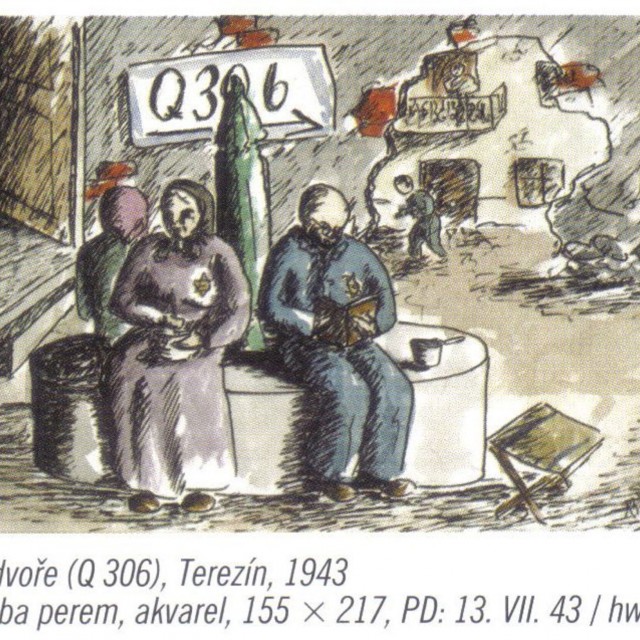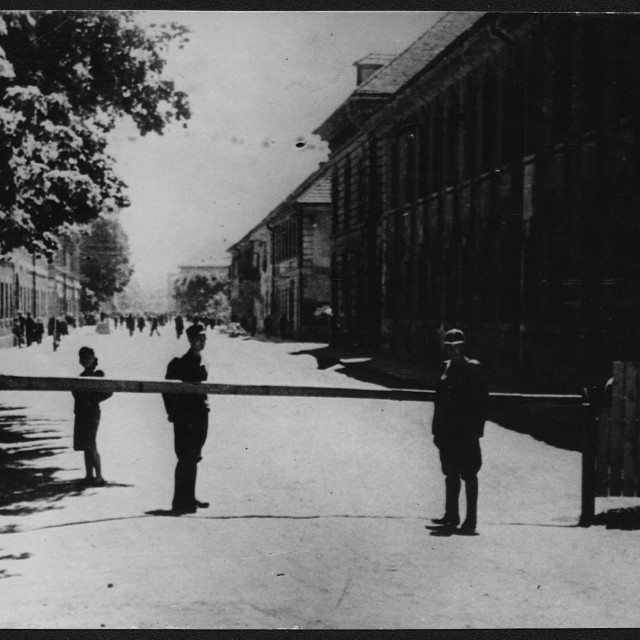There Are No Butterflies Here
Drawing was one of the few activities that the children in Terezín were allowed to undertake. Some of them therefore spent a lot of time with pencil as a companion. Among them was, at that time, thirteen-year-old Helga Hošková, (neé Weissová). She recalled: “Many of the drawings came into existence under the guidance of an Austrian female painter, who ran away to Czechoslovakia after the Anschluss and married Mr. Brandeis here. Here name was Friedl Dicker-Brandeis. In Terezín she devoted herself to children to whom she gave drawing lessons. Without anyone knowing, she was hiding the drawings. After the war two suitcases with around five thousand drawings were found in the attic of one of the children’s houses in Terezín. At present, they are the property of the Jewish Museum in Prague and in the world they are known under the title ‘There Are No Butterflies Here’.” The title of this collection of drawings is derived from a poem composed by one Jewish boy. The poem was written in Terezín and its closing lines read: ‘I have not seen a butterfly here. There are no butterflies here, in the ghetto.’ Thanks to these drawings, Helga Weissová maintained contact with her parents who were placed in other section of the Terezín ghetto: “At the very beginning, when we were allowed to send only letters, I sent to my father this naïve children drawing of a snowman. And my father answered: ‘Draw what you see.’ So I started to draw the everyday life in Terezín. I was there for almost three years and I drew over hundred drawings. And I really captured the everyday life in the ghetto. Nowadays, the drawings are very rare and valuable because they are not very many pictures documenting the life in Terezín. Moreover, they were made by a child and they are thus easily understandable. The drawing were published in a book which is called ‘Draw what you see’ after what my father had told me."
Hodnocení
Hodnotilo 0 lidí
Trasy
Příběh není součastí žádné trasy.
Komentáře
Žádné komentáře k příběhu.









